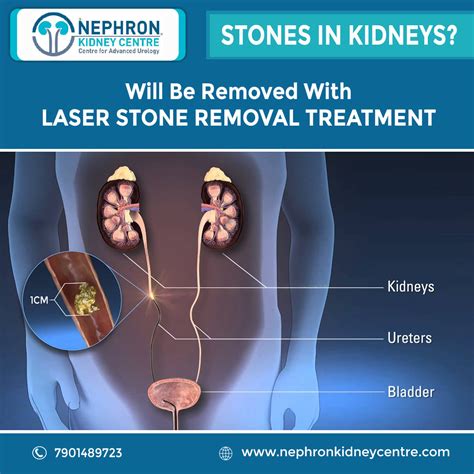Kidney stones can be a painful and debilitating condition, but fortunately, there are several effective methods for removing them. The approach to removal depends on the size, location, and type of stone, as well as the individual’s overall health. In this comprehensive guide, we’ll explore the various options for kidney stone removal, including the latest advancements and techniques.
Understanding Kidney Stones
Before diving into the removal methods, it’s essential to understand what kidney stones are and how they form. Kidney stones are small, hard mineral deposits that develop inside the kidneys when there is an imbalance of water, salts, and other substances in the urine. They can be as small as a grain of sand or as large as a pearl, and they can cause severe pain, nausea, and vomiting if they become lodged in the urinary tract.
Removal Methods
There are several methods for removing kidney stones, ranging from non-invasive to surgical interventions. The choice of method depends on the size and location of the stone, as well as the individual’s overall health.
1. Waiting for the Stone to Pass
Small stones (less than 5 mm) can often pass on their own with adequate hydration and pain management. During this time, it’s essential to drink plenty of water to help flush out the stone. Patients may need to strain their urine to catch the stone, which can then be analyzed to determine its composition.
2. Medical Expulsive Therapy
For slightly larger stones (5-10 mm), medical expulsive therapy may be recommended. This involves taking medications, such as alpha-blockers, to help relax the muscles in the urinary tract, making it easier for the stone to pass.
3. Extracorporeal Shock Wave Lithotripsy (ESWL)
ESWL is a non-invasive procedure that uses shock waves to break up the stone into smaller pieces that can then pass out of the body in the urine. This method is typically used for stones that are too large to pass on their own but too small to require surgical removal.
4. Ureteroscopy
For larger stones or those that are causing severe pain or bleeding, ureteroscopy may be necessary. This procedure involves inserting a small scope through the urethra and bladder into the ureter, where the stone is located. The stone can then be removed or broken up using specialized tools.
5. Percutaneous Nephrolithotomy (PCNL)
PCNL is a surgical procedure that involves making a small incision in the back to access the kidney. A nephroscope is then inserted through the incision, allowing the surgeon to locate and remove the stone. This method is typically used for larger stones or those that are causing significant blockage.
Recovery and Aftercare
Regardless of the removal method, proper aftercare is crucial to ensure a smooth recovery. Patients should:
- Drink plenty of water to help flush out any remaining stone fragments
- Take pain medication as directed to manage discomfort
- Rest and avoid strenuous activities for several days
- Follow a diet that is low in salt, animal protein, and oxalate (a compound found in foods like spinach and beets) to reduce the risk of future stone formation
Advanced Techniques and Technologies
In recent years, there have been significant advancements in kidney stone removal techniques, including:
- Laser Lithotripsy: This method uses a high-powered laser to break up stones into smaller pieces.
- Robotic-Assisted Surgery: This minimally invasive technique uses a robotic system to assist the surgeon during the removal procedure.
- 3D Printing and Virtual Reality: These technologies are being explored for their potential to enhance the accuracy and efficiency of kidney stone removal procedures.
Conclusion
Kidney stone removal is a complex process that requires careful consideration of the individual’s unique needs and circumstances. By understanding the various removal methods and taking steps to prevent future stone formation, patients can reduce their risk of complications and improve their overall quality of life.
What are the most common symptoms of kidney stones?
+The most common symptoms of kidney stones include severe pain in the side or back, nausea and vomiting, frequent or painful urination, and blood in the urine.
How can I prevent future kidney stone formation?
+To prevent future kidney stone formation, it’s essential to drink plenty of water, limit sodium and animal protein intake, and avoid foods high in oxalate. Additionally, patients should consider taking supplements, such as potassium citrate, and manage any underlying medical conditions, such as diabetes or high blood pressure.
What are the potential complications of kidney stone removal?
+Potential complications of kidney stone removal include infection, bleeding, and damage to the urinary tract. In rare cases, patients may experience more severe complications, such as kidney damage or sepsis. It’s essential to discuss these risks with a healthcare provider and carefully follow post-procedure instructions to minimize the risk of complications.



